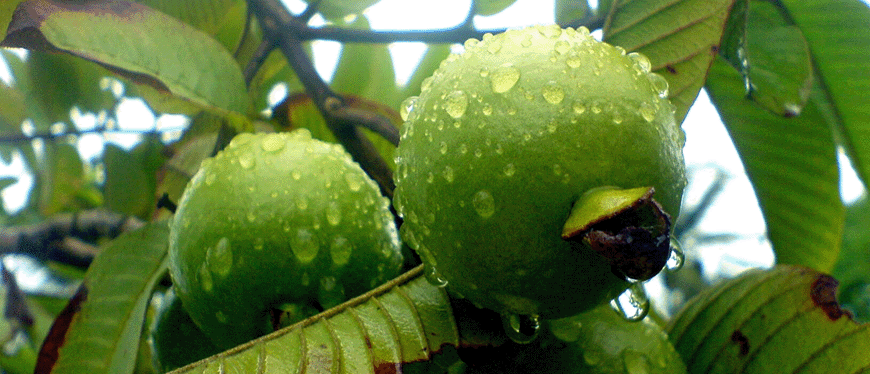Crop Production
Guava (Psidium guajava): Guava grows on small trees with spreading branches, may grow to a height and spread of 6-9 m. The guava plants are trained to a single stem. Pruning to young plants is necessary to have uniform and well balanced growth and shape. Judicious pruning is also recommended prior to flowering of selected bahar. Pruning increase the productivity and makes the various operations like spraying, harvesting easy. The guava bears fruit all year round.
Training and Pruning
-
 Training
and Pruning: Training guava trees to provide
strong framework and scaffold of branches suitable for
bearing heavy crop is found to improve yield and fruit
quality. Open centre system of training is found good
wherein plants are headed back at 1 m height from where
four primary shoots are retained for initial framework.
These shoots are allowed to grow for 3-4 months and are
subsequently pruned by cutting 1/3rd to ½ of
their length for inducing multiple shoots from the buds
below the cut ends. After making the initial framework,
two side shoots can be permitted to grow and subsequent
doubling of selected branches is continued. As flowers
are borne on current season’s shoots, a light annual
pruning of tip 10-12 cm of past season’s growth is
helpful to encourage new shoots after harvest. Suckers
coming from the basal portion of the trunk and sides of
the framework should be pruned back annually. All dead,
diseased, crowded and dried shoots should also be
removed
Training
and Pruning: Training guava trees to provide
strong framework and scaffold of branches suitable for
bearing heavy crop is found to improve yield and fruit
quality. Open centre system of training is found good
wherein plants are headed back at 1 m height from where
four primary shoots are retained for initial framework.
These shoots are allowed to grow for 3-4 months and are
subsequently pruned by cutting 1/3rd to ½ of
their length for inducing multiple shoots from the buds
below the cut ends. After making the initial framework,
two side shoots can be permitted to grow and subsequent
doubling of selected branches is continued. As flowers
are borne on current season’s shoots, a light annual
pruning of tip 10-12 cm of past season’s growth is
helpful to encourage new shoots after harvest. Suckers
coming from the basal portion of the trunk and sides of
the framework should be pruned back annually. All dead,
diseased, crowded and dried shoots should also be
removed

